In a world where rules and regulations multiply faster than rabbits, compliance management tools are the unsung heroes of the business landscape. They swoop in to save the day, keeping organizations on the right side of the law while reducing the risk of costly fines. Imagine a trusty sidekick that not only helps navigate the compliance jungle but also makes the process a whole lot easier—and yes, maybe even a bit fun!
Table of Contents
ToggleOverview of Compliance Management Tools
Compliance management tools play a critical role in navigating the intricate landscape of regulations. These tools help organizations streamline their processes and ensure adherence to applicable laws.
Definition and Purpose
Compliance management tools refer to software solutions designed to assist organizations in monitoring and managing their compliance obligations. Their primary function involves automating tasks related to tracking laws and regulations, thereby reducing manual efforts. Such tools facilitate the documentation of compliance activities, enabling businesses to maintain records effortlessly. Organizations leverage them to identify potential risks and gaps in compliance, promoting proactive measures rather than reactive responses.
Importance in Modern Businesses
Modern businesses face an increasingly complex regulatory environment, making compliance management tools essential. These tools improve operational efficiency by automating routine compliance tasks, freeing up valuable resources for strategic initiatives. They provide real-time insights, enabling organizations to respond swiftly to regulatory changes. Adopting compliance management tools can significantly reduce the risk of penalties, which can be costly. Furthermore, businesses enhance their reputation and foster trust with stakeholders by demonstrating a commitment to regulatory adherence.
Types of Compliance Management Tools

Compliance management tools come in various forms, each designed to address specific needs within an organization. Understanding these types helps businesses choose the right solutions for effective compliance.
Software Solutions
A variety of software solutions streamline compliance processes for organizations. Compliance management software aids in tracking regulations and managing documentation efficiently. These tools often include features such as dashboard interfaces for real-time monitoring, enabling teams to stay informed about compliance statuses. Many solutions provide customizable alerts that notify users of regulatory changes or deadlines. Organizations can also integrate these software systems with existing enterprise resource planning tools. This integration fosters collaboration across departments, enhancing data accuracy and reducing duplication of efforts.
Automated Compliance Monitoring
Automated compliance monitoring enhances the ability to identify and mitigate risks. Such systems utilize advanced algorithms to review processes continuously. They track compliance in real time, reducing reliance on manual checks. Alerts trigger instantly when discrepancies arise, allowing businesses to address issues promptly. This proactive approach minimizes instances of non-compliance and significantly lowers the risk associated with penalties. Furthermore, businesses can generate comprehensive reports with ease, facilitating internal audits and regulatory submissions. Automation leads to greater efficiency, freeing up resources for strategic initiatives.
Key Features to Look For
Compliance management tools offer several key features that enhance their effectiveness for businesses. Organizations should prioritize user-friendly designs and robust analytics when evaluating these solutions.
User-Friendly Interface
An intuitive user interface simplifies the navigation process. Users can quickly locate necessary functions, minimizing the learning curve required for new adopters. Clear visuals, accessible layouts, and responsive design improve engagement throughout the tool’s usage. Customizable dashboards enable users to focus on critical metrics that align with organizational priorities. Seamless integration with existing systems further enhances usability, allowing teams to enjoy an efficient workflow without significant disruptions.
Reporting and Analytics Capabilities
Strong reporting and analytics capabilities lend significant value to compliance management tools. Real-time data provides insights into compliance status, enabling organizations to make informed decisions quickly. Customizable reporting options allow users to generate tailored reports that meet specific regulatory requirements and internal metrics. Additionally, visual analytics present complex information attractively and understandably, aiding stakeholders in grasping compliance performance. Comprehensive audit trails assist in tracking changes over time, supporting easier audits and regulatory submissions.
Benefits of Using Compliance Management Tools
Compliance management tools offer significant advantages for organizations striving to navigate complex regulatory frameworks. These solutions streamline processes, enhance recordkeeping, and promote a culture of compliance.
Improved Efficiency
Improved efficiency emerges as a key benefit of compliance management tools. Automating routine compliance tasks minimizes manual effort, allowing teams to focus on strategic initiatives. Workflow automation also speeds up documentation processes. Real-time monitoring features ensure businesses keep pace with regulatory changes and compliance requirements. Streamlined reporting capabilities facilitate quicker audits and evaluations. Customizable dashboards provide users with insights into compliance status at a glance, simplifying decision-making.
Reduced Risk of Non-Compliance
Reduced risk of non-compliance stands out as another critical outcome of using these tools. Continuous monitoring helps identify potential compliance gaps, enabling proactive measures to mitigate issues. By automating alerts, organizations receive timely notifications about regulatory updates and changes relevant to their operations. Accurate recordkeeping supports audits and regulatory submissions, enhancing overall transparency. Utilizing audit trails fosters accountability, ensuring responsibilities are clear. Businesses demonstrate their commitment to compliance, ultimately safeguarding their reputation and building trust with stakeholders.
Challenges in Implementing Compliance Management Tools
Implementing compliance management tools presents several challenges organizations need to address for successful integration.
Costs and Resources
Costs associated with compliance management tools can be substantial. Many organizations encounter expenses related to software licensing, customization, and ongoing maintenance. It’s crucial for businesses to allocate sufficient resources for training and support. Additional expenses may arise from integrating these tools with existing systems. Long-term ROI calculations can complicate budgeting, making it essential for companies to evaluate how tool investment aligns with overall compliance strategy.
User Adoption and Training
User adoption poses a significant hurdle during implementation. Transitioning to new tools often requires comprehensive training for employees at all levels. Ensuring that staff understands the system’s features is vital for maximizing its benefits. Resistance to change can occur if users feel overwhelmed. Organizations should tailor training programs to address specific user needs, focusing on creating engaging learning experiences. Ongoing support and feedback mechanisms foster a collaborative environment that encourages successful adaptation.
Embracing compliance management tools is vital for organizations navigating today’s regulatory landscape. These solutions not only streamline compliance processes but also enhance operational efficiency and reduce the risk of non-compliance. By automating routine tasks and providing real-time insights, businesses can focus on strategic initiatives while maintaining a strong commitment to regulatory adherence.
As organizations weigh the benefits against implementation challenges, it’s crucial to prioritize user-friendly designs and comprehensive training. A thoughtful approach to adopting these tools can lead to significant long-term advantages, fostering accountability and trust with stakeholders. Ultimately, investing in compliance management tools positions businesses for success in an ever-evolving regulatory environment.






